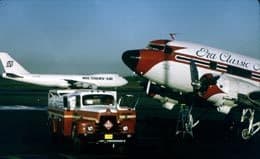 Divided into three distinct parts, Paul Otteson has created a traveler’s bible for planning an upcoming trip. The World Awaits How to Travel Far and Well, challenges you to understand yourself as a traveler, lays out planning and preparation guidelines, and explores the skills for facing unsuspecting calamities.
Divided into three distinct parts, Paul Otteson has created a traveler’s bible for planning an upcoming trip. The World Awaits How to Travel Far and Well, challenges you to understand yourself as a traveler, lays out planning and preparation guidelines, and explores the skills for facing unsuspecting calamities.
A new travel approach has been discovered through this book, along with a progressive outlook deserving for a life on the road. Let us not overlook the numerous and embracive pages of medical information for the traveler, coinciding with visa information, travel resources, even more resources, surprising you with resources you never knew existed. Each page turned is a new discovery of a peep-hole into a part of the world with sound advice on how to travel well there. Below are some excerpts of Otteson’s wise advice.
Part I: Know Thyself
It is only possible to travel well when you’re very clear on who it is that is doing the traveling. Travel is life itself – life on the road. And like life, it can be frustrating when it’s experienced without consideration of personal goals and dreams. The traveler who doesn’t have a clear personal basis for designing a journey will find herself on the beaten path – a path that, while fun and fascinating, may not satisfy at a deeper level.
 If I choose to see the Great Wall on a trip to China, the decision has to be more than a knee-jerk response to an excellent National Geographic article or even the enthusiastic recommendation of a travel agent. The choice must come from me in a more personal and fundamental way. Big travel is a big deal; I refuse to be casual about the most amazing pursuits I ever undertake.
If I choose to see the Great Wall on a trip to China, the decision has to be more than a knee-jerk response to an excellent National Geographic article or even the enthusiastic recommendation of a travel agent. The choice must come from me in a more personal and fundamental way. Big travel is a big deal; I refuse to be casual about the most amazing pursuits I ever undertake.
One way to explore your feelings about travel is to develop a set of travel goals. Specific destinations or activities don’t matter at this point. What are your broad travel goals, and how do you express them? What dreams and desires are motivating your grand plan? You have the, even if you haven’t put them into words yet. Dissect your desires to better understand them. The payoff will come in the confidence and stamina you’ll need to sustain your spirits during the challenge that lies ahead.
How To Travel: Traditional Approaches
At this point in the book, you will be thinking about what you expect to gain from your future endeavors. Will it be a deeper personal understanding? Maybe you hope to learn about a new culture, or simply have a vacation type experience. Each of these fervors will be realized through how you approach your travel itinerary. You know what you want, but how do you do it?
How to travel – oh, let me count the ways: camel caravans and casino cruises, yak-packing and kayaking, castle -hopping and carpet shopping. With so many possibilities, it becomes particulary important to distinguish between a basic, general way of traveling and specific, short term travel modes.
The broader sense of how you travel can be called your style or approach. Strangely, although people often give much attention to concerns at the short-term (i.e., camel caravan) level, many take their overall travel approach for granted, not realizing they have many options. When you decide upon an approach, you’re choosing the context of your journey. You can’t see it all; you also can’t see it in all ways.
Stand at any destination on the globe and you are confronted with a limited array of options for activities and transportation. Transport yourself in a particular manner and you have a unique menu of destinations, each with their particular slate of activity options. Plan to engage in a specific activity and you must select from certain destinations that you can transport yourself to in limited ways. A travel approach is a framework that enables activities by utilizing transport options to link destinations.
Part II: Resources for Planning and Traveling
What and how to pack are important for your travels abroad. Contact information for hostelling organizations, foreign government sources, and U.S. government sources could be vital for difficult situations.
Great guidebooks are just as equally important for most travelers; without the printed knowledge of interesting spots in a new place, one could feel as lost as ever. Otteson has not only listed and described what to pack and various governmental organizations, but he included his experience with different guidebooks, along with the pros and cons of sticking to the guidebook.
Windows
Presumably, when you visit a place, you want to experience the best it has to offer. Since you’ve never been there, however, you generally have to depend upon the guidance of those who have been there and formed opinions on what’s worthwhile. If you don’t take a few of those folks along with you, you must take their words in the form of guidebooks. Guidebooks provide what I call, “windows.”
The Lonely Planet guide to the Ladakh region of India, considered by many to be the best book on the region, rates the Dreamland Restaurant in Leh very highly. Lonely Planet has opened a “window” for the wanderer. Excited adventure travelers read about the Dreamland and go there. Other places are passed over.
Is there a problem with this? Yes and no. The Dreamland is a great place – a favorite of mine (and Lonely Planet does plug other places). The potential problem is that travelers who depend upon the guidance of the book limit themselves. In selecting sights to see from the guide listings, they pass by those that are unlisted or de-emphasized. While guidebooks provide you with much-needed needed windows, they give you walls as well.
A clear window creates the illusion of completeness. I once used and enjoyed a guidebook that took me room by room through Florence’s fabulous Uffizi Museum. I was told which works were “important” or “famous,” or considered to be “masterpieces.” Histories and critiques opened my eyes to things I never would have known or discerned. My art appreciation grew by leaps and bounds. What a window!
Ah, but as the guidebook led my eyes to ways of seeing, other ways were bypassed. Paintings that I would have notices became invisible behind windowless walls. Aspects that might have impressed me were diminished. Other books would have offered different windows and therefore different walls. NO book at all, and any walls or windows would have come from my mind alone.
So what do you do? Mix it up. Do the Uffizi with the book, use a basic pamphlet/map at the Bargello, take nothing into the Academy, and pass over the Pitti Palace for gelato and caffe latte — or some such scheme. As you travel, find the windows you need, use the ones you have, and make a few of your own. Use more than one window for a place or go with none at all if you feel like it.
Part III: Facing The Unpredictable
Wherever you are going and whatever you are doing, there will be bumps in the road. You cannot predict, yet often can prevent traveling disasters. After you have utilized Otteson’s traveling advice and still a calamity prevails, your response will be your only saving grace.
Two Perspectives
About all you can do to reduce the potential for disaster beyond the level of prudence and luck is to change how you look at the whole subject. There are two points of view that are quite helpful:
The first is the fateful view. Simply recognize that some disasters can’t be prevented. Tornadoes, earthquakes, floods, lightning strikes, etc. – all acts of senseless violence, etc. – all unpreventable. Run the scenarios in your imagination and resign yourself to the dangers of the remotely possible. Make your peace with the cosmic sneezes that might spatter you with damage. Smile at the divine ironies that could cause you grief. Laugh at the fallibilities and evils that pepper the planet’s people.
In other words, resign yourself to the inevitability of inevitability – you simply cannot escape true disasters. So why worry? Smile and dance on down the road. Skirt as many pitfalls as you can, knowing all the while that there are one or two up ahead that are disguised all too well for even your discerning eyes.
The second point of view might be called “mentally proactive”: Make disasters impossible. Of course, given the truth of the previous point, the only true way to prevent a disaster is to make that particular disaster into something that feels less than disastrous. One person’s disaster is another’s inconvenience. It’s mental. Now, it might be hard to develop an attitude that makes a plane crash seem like an inconvenience, but when it comes to money you can do it. Here’s how:
First, look at everything you will be carrying in Uganda and imagine losing it: pack, camera, $350 in cash, diarrhea pills, teddy bear – imagine it gone. Get comfortable with the idea of losing it so it won’t feel disastrous when it actually happens. There you are, standing on a corner in Kampala with nothing but your good looks. Somebody took it all, and you’ll have to beg, borrow, and steal to get by. Run the scenario. If you can’t get comfortable with the idea of losing what you must take, tough luck.
The inconvenience/disaster continuum for money is a mainly a matter of how much. If the thought of losing $350 in cash is a disastrous thought, then don’t carry $350 cash. How about $250? Disaster, hassle, inconvenience? $175? You get the picture.
The World Awaits offers a traveler’s philosophy; new attitudes and perspectives can shape your traveling experience. Understand that you cannot simply see it all. Let that thought resonate enough in your conscience to allow you to relax and appreciate what you are experiencing, instead of worrying about what you are missing.
Sometimes with traveling, you are shooting in the dark. As usual the only answers are advance research and a bit of luck. Otteson has given his readers everything for their journeys, from extended resources to dealing techniques when things go awry. Jump at the opportunity and don’t stall any longer, The World Awaits.
Excerpted from The World Awaits, How to Travel Far and Well by Paul Otteson. Second edition, published 2001 Avalon Travel Publishing.
Buy This Book From Amazon The World Awaits: How to Travel Far and Well
- Camino Tales: Wine and Memories in Galicia, Spain - July 25, 2024
- Beluga Hunting in Norway - July 20, 2024
- Costa Rica: A Rainforest Chocolate Tour - July 18, 2024





